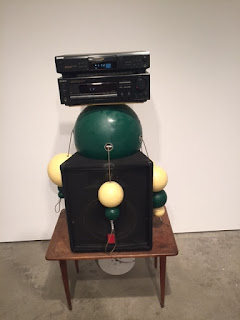Masa Jazbeck also talked about Android science. Through android science, we can create these Geminoids by integrating robotics and science. This cognitive science allows the robots to look similar to humans by the hair, skin, facial expressions, etc. The interesting part to me, is that the robots actual have the ability to learn and get smarter as time goes on. The situation that we are at hand with is how we categorize them in our society.
Most people are not fulling willing to let robots have a place in society. Jazbec explains that the average person in society is not prepared to accept these machines in our daily routines, because there is still some friction between the relationship of humans and robots. At the end of the lecture there was an interesting question asked directed towards Masa. The question was, if she sees robots as robots? The interesting and intriguing part of her response was that she has adapted to them. This response made me wonder if we as a society were surrounded by robots everyday, would we adapt too?
I related this to what we are learning about by art and robotics. This relates to the art work put into constructing these robots. For example, the Geminoids are created by sculpting the face, eyes, hair, etc. Also, the robotics and technology put into creating these machines is unbelievable.
 |
| Which one is human? |
 |
| Is this human or a robot? |
 |
| Masa Jazbec and me on the right, and my friend on the left. |
Works Cited:
123theJapan. "Humanoid Robot - Gemonoid HI-1 Android Prototype." YouTube. YouTube, 2012. Web. 02 June 2016.



